- Home
- Georgette Heyer
Acting on Impulse Page 19
Acting on Impulse Read online
Page 19
“Oh, no, no, no! I am a wicked woman, but I will be better! Oh, Henry, take me away! It is London that gives me these megrims, and the worry—the dreadful worry! The dice—the cards—I cannot help it—forgive me! oh, forgive me!”
“It is forgiven, Sophia. Don’t speak of it again.”
“How good you are! I worship you! Oh, you will take me away, before I ruin you with my play! God knows we have come near it!”
“Hush, dear! Yes, I will take you away.”
She flicked her hand across her eyes.
“Yes, oh yes! These joys are killing me—I never go abroad, you have never taken me; you would never! It was unkind, Henry! Unkind!”
“Yes, Sophia, it was unkind. But I will take you now.”
She sat up, already smiling.
“I want to go to Italy! Lady Pamela Palmer went, and my dearest Kitty, last year. Oh, how I longed to go!” She caught his hands. “And you—why, you are half Italian! Farquhar, you’ve a title—an Italian title! And an estate! That is where I will go! Oh, say you will take me!”
He pulled his hands away.
“No, not there!” For the first time since he had entered the room his voice lost its even tone. It sounded harsh even to his ears. “Anywhere but there!” He got up and went back to the fire.
The jealous, peevish light sprang to her eyes again. She sank back on to the cushions with a long wail of discontent.
“Oh, you do not love me! You refuse me the one thing I ask!”
He winced.
“For God’s sake, Sophia, no more hysterics!” he said sharply.
She quivered and burst into tears.
“Go away, go away! You don’t care, it’s nothing to you! Oh, I am miserable!”
“Sophia, anywhere but there! Paris, Vienna—where you will, but leave me that one—” He broke off, pressing his handkerchief to his lips.
“No, no, no! I want to go to Venice! Oh, is it so much to ask?”
My lord straightened himself. Once again he was quiet and collected.
“No, my dear, it is not much. I will take you.”
She sprang up, her silks crumpled and her hair in disorder.
“Ah—!” She came to him, and he saw that the tears had made ugly marks on her painted cheeks. “Now I know that you love me!” She swayed towards him, and mechanically he took her in his arms. She heaved a great sigh, full of triumph. “You do care, don’t you, Henry?” she murmured, and stole her hands up to his shoulders. Her face was upturned, expectant.
He hesitated a moment, fighting his sudden repulsion. Then he bent his head and brushed his lips against hers. She closed her eyes, leaning on him.
“Ah!” she sighed again. “Now I know! This—is Love!”
He looked down at her, but for a fleeting instant it seemed to him that it was Mary’s face he saw, grave and steadfast, bravely smiling. He drew a deep breath.
“Ay,” he said slowly. He still looked down at her, but now he only saw a painted, sharpened face that filled him with something akin to hatred. He raised his head, looking over hers into space. His voice grew softer. “This – is indeed—Love.”
THE END
READING “LOVE”
Angst. That single word could well be this story’s title – and blurb. It’s all Scarlett O’Hara selfish histrionics and Sydney Carton “It is a far, far better thing I do” self-sacrifice and while I very much admire the skill with which Heyer somehow manages to evoke my sympathies for the cheating Lord Farquhar, I am much more interested in how she managed to make both the women in this story utterly unlikeable.
First, we have Mary. (Ha! Another Mary!) Mary is having an – at least – emotional affair with Lord Farquhar, and is on intimate enough terms with him that she calls him “Henry,” but Lord Farquhar’s troubled, coquettish wife has ensnared Mary’s impressionable brother in her toils and the only way that she can be persuaded to release him is if Henry woos her back to his side and, presumably, bed. So Mary, knowing how much Henry loves her and hates his wife, throws him to the wolves – or, she-wolf, at least – in order to save her brother from a fate that he could very easily avoid if he just didn’t hit on married women. Which you wouldn’t think would be too hard.
So Lord Farquhar (I really, really want to type Lord Farquaad every time his name comes up), after some grousing and an unsubtle suggestion of elopement and lifelong adultery, goes home and finds brother Mathew in his wife’s bedchamber, which is totally normal and everything’s fine, which we know because we’ve read about cicisbeos in a dozen Heyer novels. But our Henry makes a big deal about it and pretends he cares, tricking his long-neglected wife into thinking maybe he might care for her, and sure, she’s immature and manipulative and clearly unstable, but if you had a husband who was palpably bored and/or disgusted by you and who won’t take you to his childhood home and who also has spent at least several months demonstrably in love with another woman, might not you also be kind of a wreck? Might that not be a good reason for some sympathy?
Not according to Heyer. According to this story, Lady Farquhar (interestingly, the story mostly refers to her as Sophia, as though disassociating her from even her husband’s name) is greatly at fault for even such declarations as “I am so unhappy! You never made me happy! You never tried! You never understood! You are cruel!” even though we can tell that she’s probably right, he never really did try, for all that he claims to have loved her once, that she was “inconstant,” that he was “never good enough.” There are two sides to every story, of course, but what we see very clearly from Henry is that he has indeed been so “cruel” to his wife as to actively seek out the company of a woman to whom he was attracted, enough that he grew to fall in love with this woman and offer to throw away everything, including his wife and her reputation, all for the illicit thrill of it.
It’s all very well to be all noble and “I will give you up to save your brother” about it, except you have a wife and it’s the eighteenth century and all these broken hearts are entirely your fault, Farquhar!
I am feeling very emotional about this story.
It’s all made worse, of course, because Henry is so very articulate and cutting and clever. He’s another Andover/Avon effort, a specialty of Heyer’s – The Talisman Ring’s Ludovic Lavenham, Cotillion’s Lord Legerwood, Frederica’s Lord Alverstoke, among so many others, have the gift – except not when he’s with Mary, there he’s all ardent schoolboy, as callow as brother Mathew defiantly declaring himself attached to Sophia. But have him contemplate his fate as a husband, newly invested in his marriage at his true love’s behest and confront the youngster who is the reason for his predicament, and he’s all icy looks and cool remarks and of course Sophia went looking for love in all the wrong places, you’re a passive aggressive asshole!
Wait, I’m supposed to feel sorry for him, right?
I don’t.
As far as I’m concerned, he deserves his fate.
Everyone here does.
THE SEARCH FOR “ON SUCH A NIGHT”
Here’s what I knew.
In 1935, Georgette Heyer sold a short story entitled “On Such a Night” to an Australian magazine.
And that’s pretty much it.
That’s all I knew.
That’s all anyone knew.
What the story was about, even what era it was set in, no one had any idea. The first I heard of it was a brief mention in my dear Jennifer Kloester’s seminal 2011 work, Georgette Heyer: Biography of a Bestseller, and I had been intrigued enough then to have checked out multiple microfilm recordings of some of the bigger women’s magazines of my nation from that time – the Australian Women’s Weekly, the Australian Woman’s Mirror, Australian Woman’s World – spending hours and hours and hours at the State Library of Victoria to see if I might stumble upon this lost gem, like Indiana Jones seeking the Holy Grail, but marginally less dusty.
My hunt went unrewarded, unsurprisingly, and it was years later that I again got involved in the search
, when I began to plumb the depths of digitized back catalogues around the world for all things Heyer-related that might be of interest to readers of Heyer Society, both the book and website. In the course of this investigation I stumbled across “The Chinese Shawl” printed in The Quiver – previously, the only known version was a Danish-language translation – and, riding high on that discovery, went further and came upon a listing in the radio program guide printed in the Sydney Morning Herald for Monday, December 6, 1937 that read:
11.45 - Story: “On Such a Night” by Georgette Heyer
Woah. Really?
This was new information.
If nothing else, we now knew that “On Such a Night” was short enough that it could be read aloud in fifteen minutes.
The station it was broadcast on was Sydney’s 2GB, and armed with this knowledge, a new avenue of research opened up. The game was afoot! I was filled with a new zeal—could I actually be the one to crack this mystery, all these years after my first attempt? After Jen, and so many learned others, had already attempted it? And could it be that it would go beyond ceaselessly sifting through microfilm and delicate copies of long-ago publications, but I’d be able to chat to radio buffs about the history of the medium, as well?
My first stop, of course, was 2GB, to inquire if perhaps they had archives going back that far. When my initial e-mail went unanswered for a month, I called into their offices, only to be told by a disinterested operator that they did not have either physical copies nor transcripts of their programs from further back than the 1970s. Fair enough.
I then reached out to Ian O’Toole, curator of the Sydney-based Kurrajong Radio Museum, with whom I had a most instructive chat about how radio stations used to record their programs – on pressed vinyl discs similar to LP records, but much larger – and how they would then dispose of them indiscriminately when their storage capacity was reached. The hitch in his voice was obvious when he told the anecdote of how a Brisbane station manager would take his employees down to the banks of the river on Friday afternoons and they would frisbee years-old broadcasts into the water. I’m a collector of the old and rare myself, so that tale of thoughtless, wanton destruction similarly affected me.
Ian’s collection, sadly, did not boast the needful, but he sent me to the National Film and Sound Archive of Australia, in the hope that there might be something there. Within hours I heard back from Zsuzsi Szucs (which has got to be one of the greatest names ever, not to mention a phenomenal Scrabble score), the institute’s collection coordinator, who regretfully told me that they only had four 2GB recordings from the period, and none were what I was seeking – and, of course, the odds of that being the case would have been pretty astronomical. Then she sent me links to the short story collection Snowdrift and Georgette Heyer’s Wikipedia page, which I am sure was very kindly meant.
It was quite heartening to learn that that of the four 2GB radio recordings still in existence, however, all were radio dramas, and I found the listings for them on Trove, the National Library of Australia’s digital collection, in radio magazine Wireless Weekly, which began publication in 1922 and – astonishingly – only came to an end in 2001, then under the title Electronics Australia. I dove into the Wireless Weekly edition for the day of the “On Such a Night” broadcast, and discovered yet more information I didn’t have before: the story was read over the airwaves by one Dorothea Vautier. To wit:
11.45: Dorothea Vautier—On Such a Night, by Georgette Heyer (Story)
Oooh! Now we had a name!
But who the hell was Dorothea Vautier?
It turned out that she was something of a radio glamour girl of 1930s Sydney radio. She became host of the Australian Women’s Weekly radio sessions in 1935, first on 2UW and then 2GB, and was hailed by Wireless Weekly as “one of Sydney’s most attractive broadcasters” in 1938. Now, given that the Australian Women’s Weekly had a positive addiction to serializing Georgette Heyer’s novels, as well as publishing several of her short stories over the years, and that Dorothea Vautier read the story, one might have thought that the “Australian magazine” mentioned in Jen’s biography, and to which the story was initially sold was, in fact, the Women’s Weekly all along. Maybe they just forgot to publish it, and only aired it on the radio? Because I had personally checked every edition of the magazine from the entirety of 1935 – 1940, as had Jen, as had others, and it simply wasn’t there.
So where was this story published? And if it wasn’t in the Women’s Weekly, why was their radio-based poster girl the one to read it on air?
Next, it was time to look into Dorothea Vautier. Was there the slightest chance she was still alive? And, total long shot time, would it be possible that she, or her heirs, could have archives of her radio career that included the story, or even that she might perhaps remember what the story – that she read aloud, once, eighty-two years ago – was about?
I could only ask, right? But first, I had to find her.
Was she the Dorothea Vautier who produced a slim volume of stories and poems, circa. 1931, entitled The Story of Teddy Koala, with illustrations by Noel Burnet of Koala Park? Sadly, no dedication page or identifying information is present in that book, but it seemed likely.
I thought I was on her track, when I found a listing on familytreecircles.com, tantalizingly detailing the marriage of one Dorothea May Vautier. But when I dug further, that Miss Vautier married a Charles Roger Darvall in Victoria in 1931, and further reading in the Wireless Weekly archive led to the news that our Dorothea Vautier was married to one Bill Power, and moreover that in 1939 she had moved to the US to try her hand at radio announcing over there.
For a while I thought she might be the Dorothea Vautier I found on a listing at Ancestry.com, but that one was born in 1908 in Charlton, in country Victoria and died in 1977 in Richmond, a suburb of Melbourne, her father Alfred Clark Vautier, and mother Willamena Sarah Klug. A profile of Vautier from Wireless Weekly, however, cited her as the daughter of C. A. Vautier, a well-known New Zealand architect, so she was clearly not the Victorian Dorothea. And I still did not know when (or if?) she had died.
But wait! A Wireless Weekly “Portrait Gallery” from December 1933 – captioned “The first portrait of a woman announcer to be published in our series” – included the news that back then Vautier was married to Mr. F. W. L. Esch, a somewhat radical Sydney journalist. And, among other outlets, Esch wrote for The Australian Women’s Weekly! He covered New Books, as well as writing some feature articles. (My favourite: “Eating of Sugar Once Was Terribly Wicked!” – an article written in 1934, and of which echoes can be found in paleo blogs and the like across the internet to this day.)
For all his works, however, not much is now known of Mr. Esch’s life and times. I know he was still alive in 1976, because a founding member of the D. H. Lawrence Society of Australia spoke to him regarding Lawrence’s visit to our shores, something Esch had researched as early as the mid-1950s, and which is very intriguing in its own right.
And I know he is now dead, because artworks from his estate were sold in 2014.
But, this is interesting! Turns out the Bill Power to whom Dorothea was married in 1939 is William Power, a playwright and “brilliant radio dramatist” (cf. Wireless Weekly) who also worked at 2GB. Wonder if they moved to America to avoid the scandal, when she left the journalist for the dramatist? Was divorce still scandalous in 1939?
Then, in 1940, Vautier was working for CBS radio. And then: nothing. I can’t even find an obituary for a Dorothea Power anywhere, let along a Vautier or an Esch.
So, she’s vanished from the record, best I can tell.
But yes, she did write the book about the koala.
IT seemed like the radio angle, at first so tantalising, was going to be a dead end. (Or, in Dorothea Vautier’s case, a presumed dead end.) So next I returned to the microfilm that had typified my long-ago forays into “On Such a Night” research, spending many, many more hours at the State Library immersing myself in the magaz
ines of yesteryear.
Magazines that were full of the “ex-King,” Edward VIII-turned-Duke of Windsor who abdicated the throne for love, long-forgotten matinee idols and the “Quins” – the Dionne Quintuplets, born in Canada in 1934 – while the newspapers carried news of Japanese war efforts and the rise of Adolf Hitler in Germany (while many book review sections give a disconcerting number of column inches to thoughts on Mein Kampf, which I never thought of as having been translated and sold under the English title My Struggle, but yeah, it was), and advertisements exhorted the joys of “damp setting” one’s hair and the miracle food that was the “rindless” and “completely digestible” Kraft Cheese. There were short stories by H. G. Wells, and book reviews of the newly-released Gone with the Wind, and reference to a host of long-forgotten and out-of-print authors who were once so prolific and popular – just another reminder of how rare it is that Georgette Heyer’s works have so long outlasted her, when so many of her contemporaries have fallen by the wayside. She’s certainly up there with Wells and Margaret Mitchell, at any rate.
The problem with all this was, once I had rechecked the Women’s Weekly and its well-known competitors – many of which were now digitized on Trove – I was at something of a loss of where to look next. What I needed was some kind of listing of all the likely publications that would have been in print at the time. A concordance of women’s and literary magazines, that would have done nicely. In vain did I search, until I at last had the happy notion of asking a librarian for help.
I know. I’m a genius.
“Excuse me,” I said to one of the experts at the help desk. “I’m not sure how to find this, but I’m looking for a listing of all the women’s… and I guess also literary,” I remembered The Quiver, “magazines that might have been published in Australia in the mid- to late-1930s.”

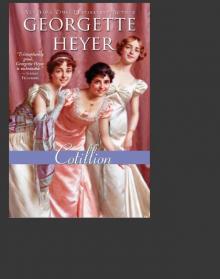 Cotillion
Cotillion Frederica
Frederica The Black Moth: A Romance of the XVIIIth Century
The Black Moth: A Romance of the XVIIIth Century Lady of Quality
Lady of Quality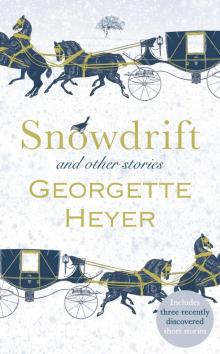 Snowdrift and Other Stories
Snowdrift and Other Stories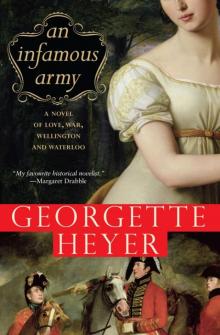 An Infamous Army
An Infamous Army The Talisman Ring
The Talisman Ring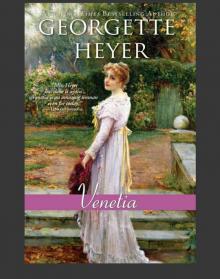 Venetia
Venetia The Quiet Gentleman
The Quiet Gentleman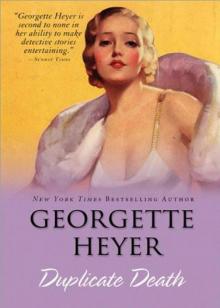 Duplicate Death
Duplicate Death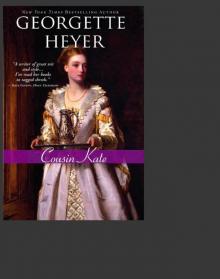 Cousin Kate
Cousin Kate Black Sheep
Black Sheep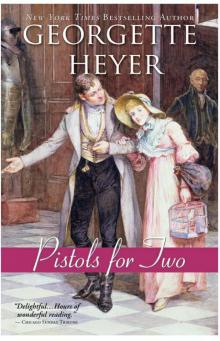 Pistols for Two
Pistols for Two Sprig Muslin
Sprig Muslin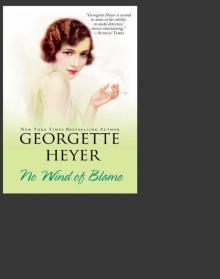 No Wind of Blame
No Wind of Blame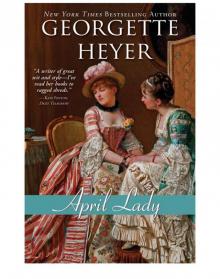 April Lady
April Lady False Colours
False Colours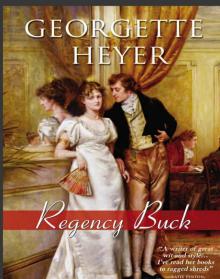 Regency Buck
Regency Buck The Toll-Gate
The Toll-Gate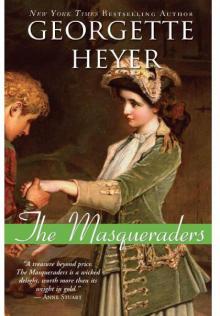 The Masqueraders
The Masqueraders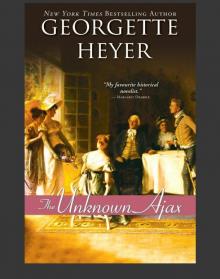 The Unknown Ajax
The Unknown Ajax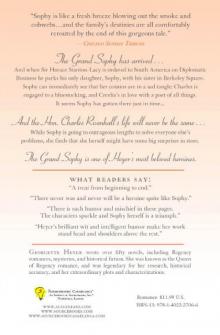 The Grand Sophy
The Grand Sophy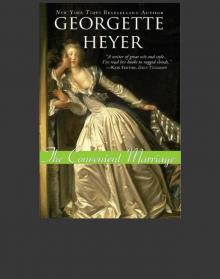 The Convenient Marriage
The Convenient Marriage Faro's Daughter
Faro's Daughter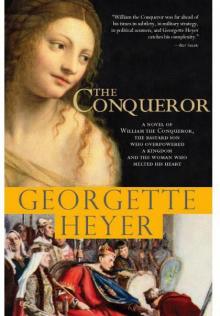 The Conqueror
The Conqueror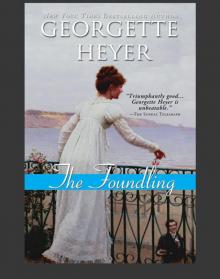 The Foundling
The Foundling The Black Moth
The Black Moth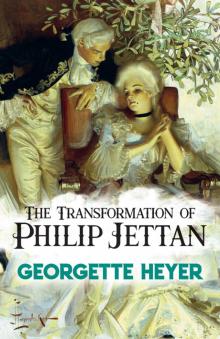 The Transformation of Philip Jettan
The Transformation of Philip Jettan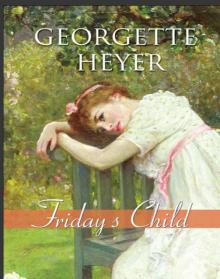 Friday's Child
Friday's Child Beauvallet
Beauvallet They Found Him Dead
They Found Him Dead Charity Girl
Charity Girl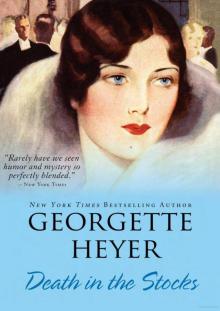 Death in the Stocks: Merely Murder
Death in the Stocks: Merely Murder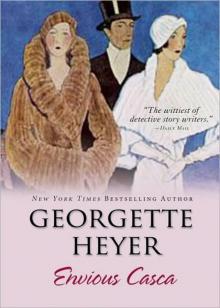 Envious Casca
Envious Casca Behold, Here's Poison
Behold, Here's Poison Arabella
Arabella The Nonesuch
The Nonesuch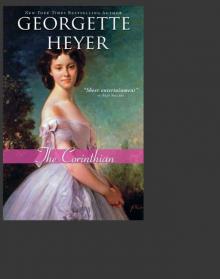 The Corinthian
The Corinthian Jennifer Kloester
Jennifer Kloester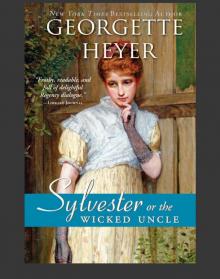 Sylvester
Sylvester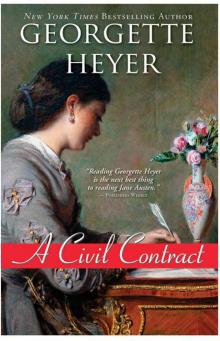 A Civil Contract
A Civil Contract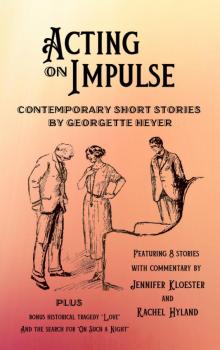 Acting on Impulse
Acting on Impulse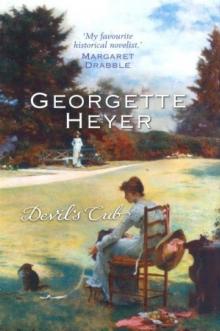 Devil’s Cub at-2
Devil’s Cub at-2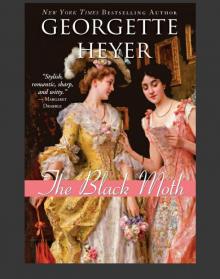 Black Moth
Black Moth Grand Sophy
Grand Sophy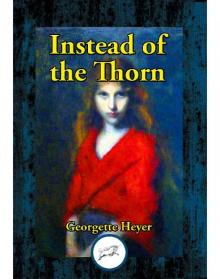 Instead of the Thorn
Instead of the Thorn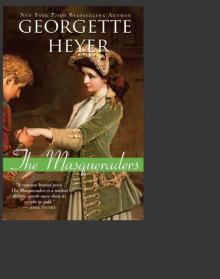 Masqueraders
Masqueraders Corinthian
Corinthian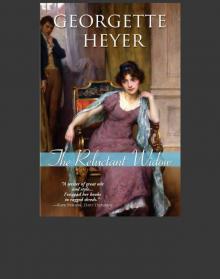 Reluctant Widow
Reluctant Widow